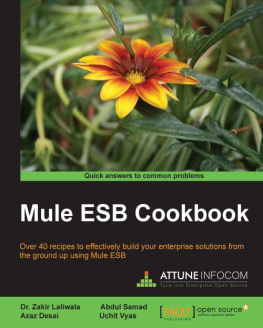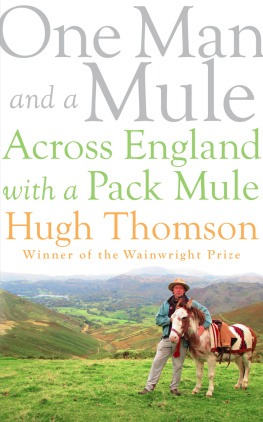This edition is published by BORODINO BOOKS www.pp-publishing.com
To join our mailing list for new titles or for issues with our books borodinobooks@gmail.com
Or on Facebook
Text originally published in 1955 under the same title.
Borodino Books 2017, all rights reserved. No part of this publication may be reproduced, stored in a retrieval system or transmitted by any means, electrical, mechanical or otherwise without the written permission of the copyright holder.
Publishers Note
Although in most cases we have retained the Authors original spelling and grammar to authentically reproduce the work of the Author and the original intent of such material, some additional notes and clarifications have been added for the modern readers benefit.
We have also made every effort to include all maps and illustrations of the original edition the limitations of formatting do not allow of including larger maps, we will upload as many of these maps as possible.
TWENTY MULE TEAM DAYS IN DEATH VALLEY
With Some Observations on The Natural History of Mules and Muleskinners, and the Mining of Desert Borax, and a Reprint of Henry G. Hanks' Report on Death Valley, 1883
BY
HAROLD O. WEIGHT
1WHITE TREASURE
The saga of the great mule teams and giant wagons that are todays romantic symbol of Death Valley began long before the first muleskinner piloted his lumbering borax freighters out of the Big Sink. Its roots were in that night when Aaron and Rosie Winters crouched in their darkened camp at Furnace Creek and read their future in the green-flickering flame of burning borax. But its seed went farther back.
When the emigrants of 1849 escaped, hungry and afoot, from the harsh dry talons of Death Valley, they advised anyone willing to listen that they had found the dregs of creation. There might or might not be silver in the mountains west of the valley, as some claimed. But Death Valley was only a horrid, worthless sink of salt and saleratus.
Prospectors who backtracked the Fortyniners, seeking possible substance in that yarn of a silver bonanza, agreed. Death Valley was just a big, no good bed of alkali.
Neither estimate was mineralogically accurate.
There were more components than salt and soda in that grim below-sea-level sink. Borax, for instance. Some Fortyniners seeking escape from Death Valley had trudged right over a rich borax deposit. Of course, no one knew then that borax existed in the United States. Not until 1856 did John A. Veatch discover it in a spring in Tehama County. Not until 1864 did W. C. Ayres produce it commercially at Clear Lake, California. When he did, the price of borax fell from 50 to 30 a pound.
Stillthat was $600 a ton! Prospectors recalled chemical flats and playas they had seen in California and Nevada deserts. Could they hold borax, too? They could! In 1871 William Troup found ulexite the silky cotton ball borax ore of desert marshesat Salt Wells and Columbus Marsh, Nevada. Within a year a company financed by William T. Coleman of San Francisco was gathering and refining ulexite at Columbus. The same year Francis Marion Smithlater famous as Borax Smithmade an even more important strike at nearby Teels Marsh.
John and Dennis Searles had been mining for years down in the Slate Rangeone range west from the Panamintswhen in 1873 a visitor brought news of the borax excitement and samples of borax. John Searles thought they looked like the stuff he had found in the big flat southwest of the Slates nearly ten years before. He, his brother, and friends went down to the marsh and filed a lot of claims. Searles was right. Soon Borax Lake was producing. Today, known as Searles Lake, it still is producing a variety of chemicals at Trona.
The borax rush sent prospectors even into Death Valley. The Inyo Independent , May 10, 1873, announced two big borax strikes in the valley. The finds must have been real, for borax was later worked at one location specified: the immediate vicinity of the spot where those 1849 emigrants abandoned their wagons. But no development was done, so the official discovery of borax in Death Valley had to await 1880 and Aaron Winters.
The story of Aaron and his wife, Rosie, was told firstand bestby John R. Spears in Illustrated Sketches of Death Valley , 1892, long out of print. The Winters lived primitively in a stone house at Ash Meadows, eastward over the Funeral Range from Death Valley. From a prospector staying overnight, Aaron learned about borax and how to test for it with sulphuric acid and alcohol. Winters remembered a mineral down in Death Valley that just might be borax. He and Rosie went to test it.
Writers who unhesitatingly perpetuated some pretty tall Death Valley legends, for some reason went into a fine tizzy over the source of Winters sulphuric acid and alcohol. He could have obtained them from the nearest mines assay office, or from Charles Bennett, who supplied prospectors at a sort of trading post at Pahrump, 25 miles southeast, or from his visitor, who certainly must have been borax prospecting.
In Death Valley Winters set up camp, went down to the marsh and collected likely looking samples, and returned to base to await darkness.
At last, John Spears wrote, the sun went down and the flaming color in the western sky faded and darkened until the shadows in the gorge of the Funeral Mountains where the Winters were camped became absolutely black. By the faint glow of a few dying coals Winters and his wife sat down on the sand, put a saucer of the material on the rock between them, poured the chemicals and the alcohol over it, and then Winters scratched a match to fire the mixture.
How would it burn? For years they had lived as the Paiutes live on the desert. Not only had the wife to do without the little luxuries and comforts dear to a womans heart; they had both lived on mesquite beans and chuckawallas when the flour and bacon were gonethey had even gone hungry for lack of either. Would the match change all that? Winters held the blaze to the mixture in the saucer with a trembling hand and then shouted at the top of his voice:
She burns green, Rosie! Were rich, by God!
Winters claims, some two miles north of Furnace Creek Ranch, were sold to William Robertson, representing William T. Coleman, for $20,000. Aaron used most of it to buy Bennetts big ranch at Pahrump, where Rosie died a few years later. Colemans company, the Greenland Salt & Borax Company, built aadobe and stone buildings, wooden warehouses, big boiler and 36 huge crystallization tankslater called the Harmony Borax Works, on Winters claims.
Coleman also developed the remnants of a ranch a man known as Bellerin Teck had started on Furnace Creek. Alfalfa, fruit trees, and Fremont cottonwoods were planted on about 40 acres of land watered from the creek. Called Greenland then, it is Furnace Creek Ranch now.
The Harmony Borax Works was not yet refining borax when Henry G. Hanks published his notable Borax Deposits of California and Nevada, in the Third Annual Report of the California State Mineralogist, 1883. But Hanks reported the Eagle Borax Company, about 20 miles south of Furnace Creek, was producing and shippings.
















